D&D Dungeon Master’s Guide (Dungeons & Dragons Core Rulebook)
£24.90£39.90 (-38%)
Weave legendary stories in the world’s greatest roleplaying game. The Dungeon Master’s Guide provides the inspiration and guidance you need to spark your imagination and create worlds of adventure for your players to explore and enjoy. Inside you’ll find world-building advice, tips and tricks for creating memorable dungeons and adventures, optional game rules, hundreds of classic D&D magic items, and many other tools to help you be a great Dungeon Master.
Read more
Additional information
| Publisher | Dungeons & Dragons, 1st edition (9 Dec. 2014) |
|---|---|
| Language | English |
| Hardcover | 320 pages |
| ISBN-10 | 9780786965625 |
| ISBN-13 | 978-0786965625 |
| Reading age | 3 years and up |
| Dimensions | 21.74 x 2.21 x 28.4 cm |

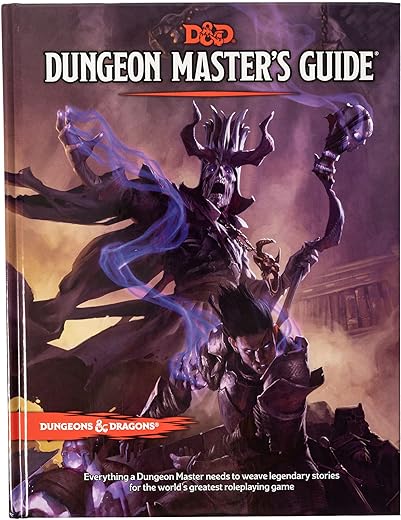
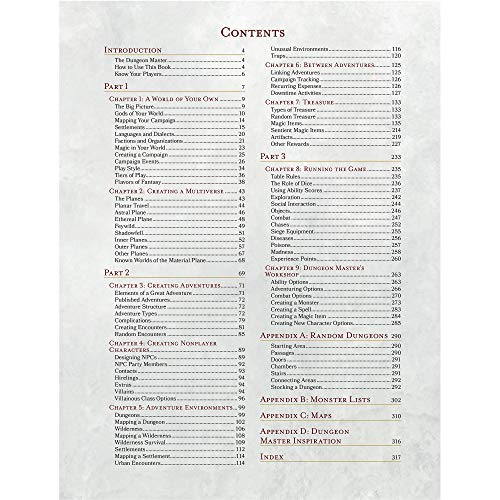
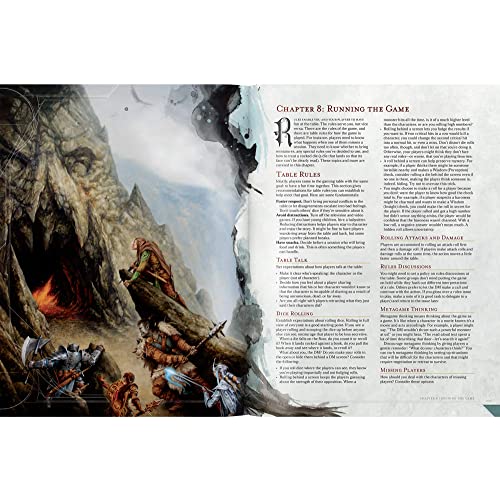

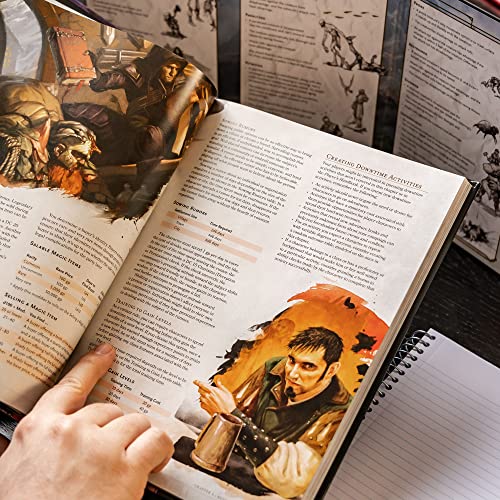
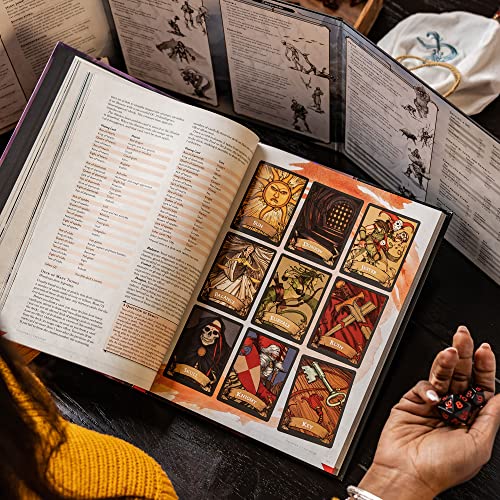
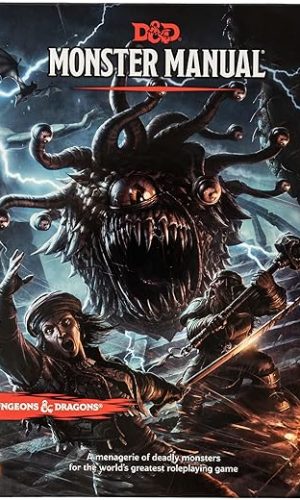
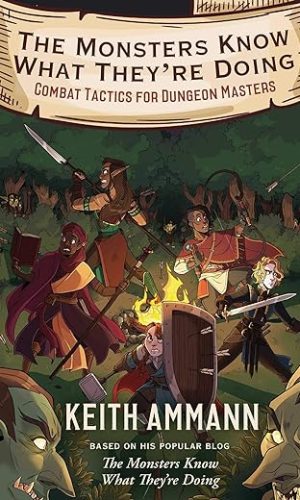
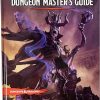
by D&D players handbook
Love it, came in good time and excellent condition
by Matthew
I was a bit sceptical of 5e being promised to 3.5e (completely dismissing WoWe) but this book is full of good stuff. It goes into detail around making story based games with tables full of ideas/concepts. It provides countless tables to randomise or help kick start your imagination like: ‘fleshing out NPC’s’ to make them memorable, ‘creating the perfect villain’, ‘story/plot lines’ with twists and intrigue and ‘fleshing out dungeons’ with ideas of furniture, noises, traps and tricks! It even has a random dungeon generator, treasure list and monster encounter table. The artwork is inspiring and modern and overall well written.
In regards to the rule set well that’s in the PHB. The DMG provides lots of variant rules to make your game more like 3.5e for advanced players. This includes diagonal movement, flanking, tumble, overrun, trip, disarm massive damage, encumberance and a few others.
On a personal note I did not think I would like this edition but the transformation is simple. There is no more bonus/ penalties for every given circumstance so that u need a calculator and Stephen Hawkins brain to keep up in fights, it’s simply advantage or disadvantage (meaning – depending on the circs, you roll 2x d20 and choose highest or lowest of the two). It speeds up play and is a good method. They have reduced the amount of attacks of opportunity to literally only when u move out of a threatened square. This allows more movement and more opportunities to be heroic as opposed to 3.5 where one wrong step will get u killed. I DM a game on Roll20 using online tabletop and players are already feeling the power to do more things for example, at level 1, my half Orc barb scaled a crumbling wall to get atop a bridge above them to push the bandit on it, off and over the other side. You wouldn’t dream of doing that in 3.5 with the amount of AoO you would incur. I like flavour in action and any chance to do this movie like stuff keeps the game fun and players smiling! The raging half Orc was equally surprised when my other hidden bandit jumped out and pushed him off the bridge onto his companions below!!
I know I keep making comparisons with 3.5 but I’m sure there are lots of players like me who love that edition and are cautious about moving over. The magic is not as overpowering in 5e making it balanced for players and DM alike. colour spray has been toned down so that it wont knock out all your monsters for the encounter so they can be coup de grace, glitterdust is no more – blinded condition no longer cripples your char and no more stupid high DC’s that is impossible for low wis/int/Cha characters to pass.
My only gripes with the book and edition is around treasure. they have toned it down making magic items rare and less available – fair enough. I think the best weapons/ armour are now +3. Yes there are random tables but the items now are categorised in A-I either common, uncommon, rare, very rare or legendary. The guidance on distributing loot is based over the heroic tiers for example; between 1-4th you should roll 8 times on treasure hoard table. As you can imagine rolls can be unreliable and give more or less out. Items no longer have prices or levels, so they are worth a sum equal to their status like all common items are worth 50-100gp. For me I like to know how much treasure a player should have earned to keep them balanced, or at the very least how much treasure to allocate per given encounter difficulty. The concept of ad hoc loot giving is a bit anarchic for me.
Overall I’m not gonna let that effect my rating. The way you work out encounters and CR’s is much simpler now. Traps are more flavourful and creative too. I feel I’m not to restricted by game mechanics anymore. Im very happy with my purchase and well worth the transformation for unsure 3.5 fans.
by RJ
Super happy with this
by A. Rose
Beautiful book, has the nicest cover and feel by a mile out of the 3. Has some interesting lore in it. Honestly, if you want to be a DM, really your main point is to learn the Player’s Handbook off by heart.
The book’s split into 3 parts, Part 1, Part 2 and Part 3. Here’s a rundown of what you get. Honestly, chapters 1-6 are nice for a bit of inspiration, but 6 onwards is really what you’re buying this for. As a DM though you’ll probably spend way more time in the PHB. I glance at this like once in a blue moon, it’s not the type of thing you need on hand if you print yourself all the most useful bits and bobs for your DM screen.
Part 1 (Master of Worlds):
Chapter 1, which is about world building. Tbh this is very generic advice and it’s mostly naturally intuitive anyway, but even if it wasn’t you’d probably be best with like, a Kobold guide to Worldbuilding.
Chapter 2 is about their setting’s planes of existence, which is fairly useful if you want to use a generic setting and you think your campaign will last long enough to get into alternate planes.
Part 1 I find pretty superfluous.
Part 2 (Master of Adventures):
Chapter 3: 10% of the chapter is super important – shows the rules for creating encounters. Useful because the online ones don’t seem to actually work very well. 90% of this chapter however is “roll on this d20 table to invent a plot”. Like, really, do people do that? Either you’re going to invent your own worlds on the fly or you’re going to use an adventure module. I mean, you can read this for ideas, but who is going to roll a d12 to find out what the climax of their adventure is?
Chapter 4: Roll to make an NPC, same as chapter 3 (at least this is more likely if you quickly had to put something together). More importantly, contains Oathbreaker Paladin and Death Domain for the cleric. These are cool things to spring on a player who falls to the darkside. Also optional rule for Loyalty is in here, you may find useful.
Chapter 5: Roll to make a world. Only really useful thing here are sample traps. (Again, read it for inspiration but not really useful).
Chapter 6: Shows downtime rules. Useful if you break up your campaign that much? I tend to leave mine on cliffhangers and pick back up straight where we left off though. Nice after a campaign finishes and you want to give your PCs cool new bonuses though.
CHAPTER 7: Finally things get good. This chapter is 99 pages on its own. Contains the rules for treasure drops, and then an absolute TONNE of magic items. Worth the buy just for that. Unless you can grab a copy of Forged In Magic: REFORGED perhaps.
Part 3 (Master of Rules):
Okay here’s the entire point of the book.
Chapter 8 contains all combat rules, ability checks, inspiration, travel, object use, improvising damage, using battle grids, adds flanking, chases, diseases, sieges, poisons, madness, potion crafting, ways to award xp, how to deal with absent players.
Chapter 9 contains ways to modernise it with weapons and use alien technology, some combat options, and otherwise is a homebrew chapter that shows how to make monsters, spells, magic items, backgrounds.
Appendices:
A: Roll to make dungeons.
B: Lists of monsters from the Monster Manual based on environment! Like Arctic, coast etc – super useful. Wish Tome of Beasts had this. Also based on CR.
C: Some generic maps.
I mean, it’s beautiful, the writing is quality and I guess most of it is generically useful to all DMs but it feels like the first half is more for people who don’t like to come up with their own material. It’s the least useful of the 3 books though. You could probs live without it given that encounter and loot generators exist online and they’re the main use, as long as you’re comfortable with combat. (Which, tbh is mostly in the PHB anyway).
by Dungeonmaster
This is was delivered perfectly as described.
by Dan B.
All the insides are intact, which is what’s important. The cover was a little different with several marks etc on both the front and back, so it probably wasn’t handled the best.
by HerringGull
My eldest discovered my AD&D core rule-books and got hooked on D&D.
So birthday gifts this year were easy.
This was a no-fuss purchase of the 5e Dungeon Master’s Guide. Printing quality is excellent. Pages are shiny, unlike the old-school versions. I reckon this enables higher printing quality.
He’s been through it cover-to-cover and backwards (and ran a few campaigns with it) so I’m certain there are no missing pages (a thing I wouldn’t have even known was “a thing” until I started hunting down 5e core rule books here on Amazon. How strange!).
by Birthday books
Book arrived very good condition very happy